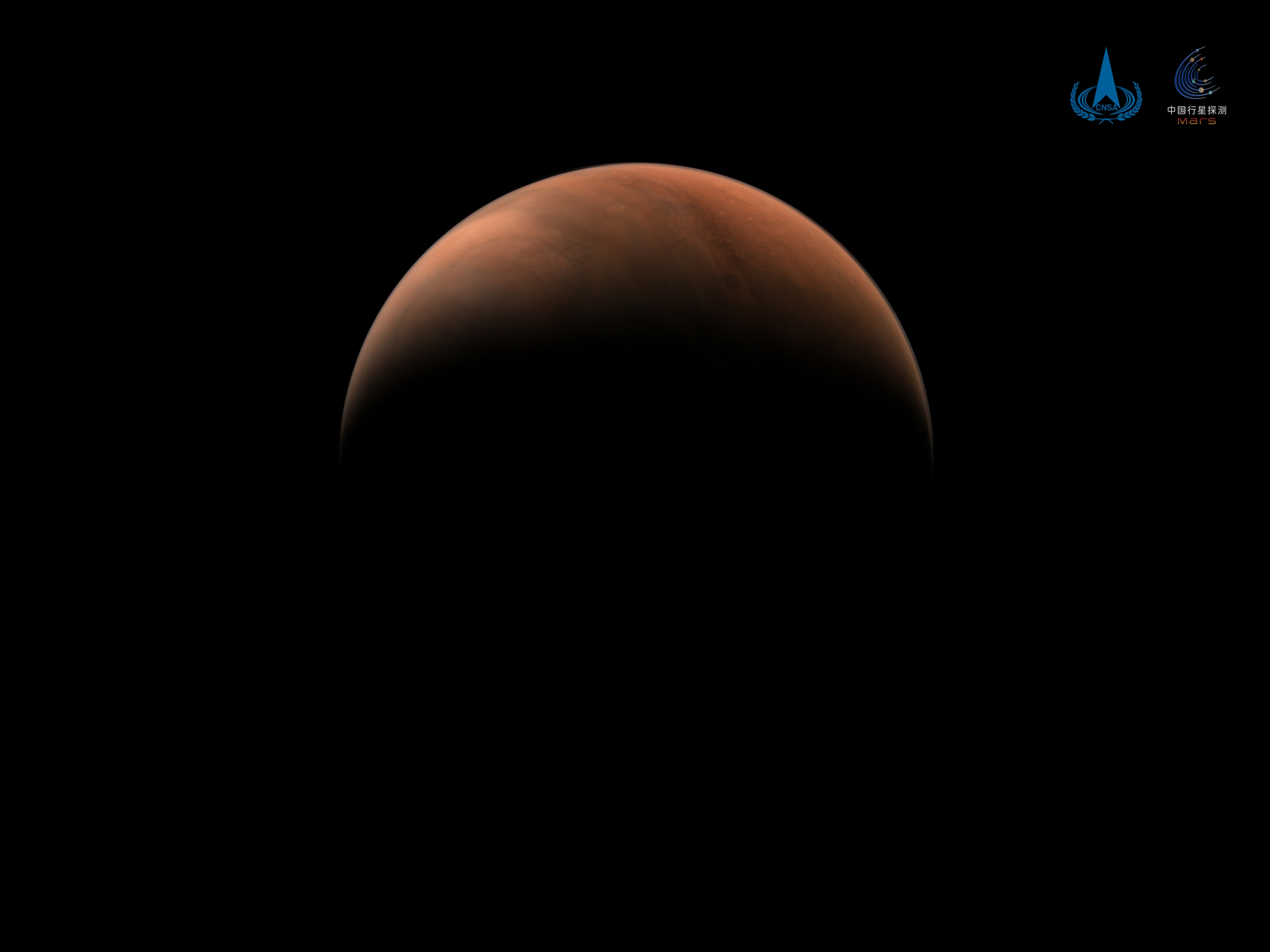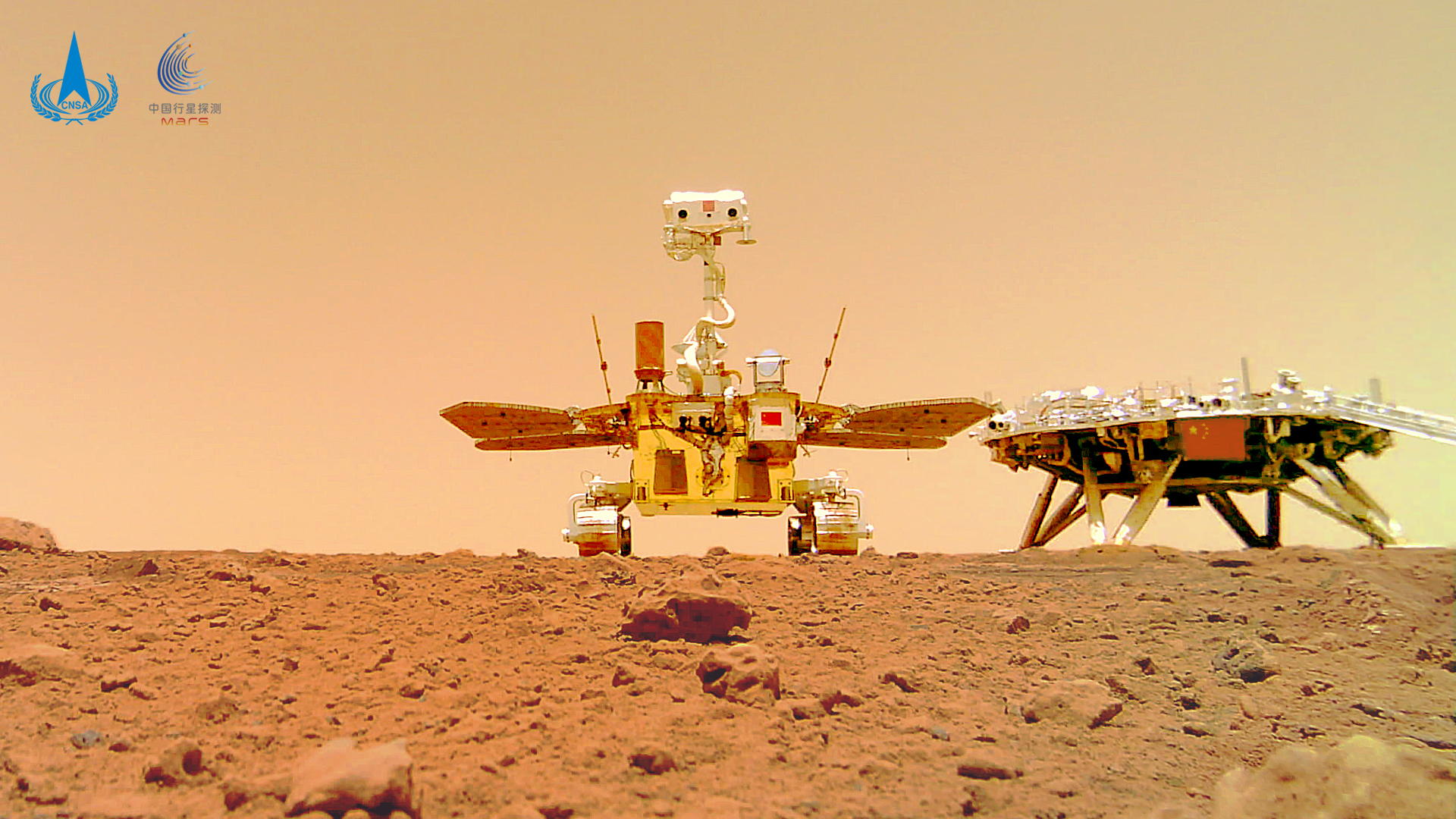China wants to build a sustainable human presence on Mars. Here's how.

China is looking at the ways of getting astronauts to Mars and back safely and potentially establishing a long-term presence on the Red Planet.
That's according to a senior Chinese space industry official speaking Wednesday (June 16) at the Global Space Exploration (GLEX) conference taking place in St. Petersburg, Russia.
Wang Xiaojing, president of the China Academy of Launch Vehicle Technology (CALT), told the conference audience via a previously recorded speech that China is researching the best options for sustainable human missions to Mars.
Related: China is gaining ground in space. Should the US be concerned?
Noting the recent successful landing of the Tianwen-1 Mars rover Zhurong, Wang stated that China has bigger plans, beyond even a Mars sample return mission planned to launch in early 2029.
These and other, unspecified robotic missions to Mars, including in-situ resource utilization tests — for example extracting subsurface water from beneath the surface or generating oxygen — are intended to build a platform for initial human missions, starting with an orbital outpost, then landing on the planet's surface and finally constructing a Mars base.
The third and final stage envisions forming a so-called "econosphere," facilitated by a large-scale Earth-to-Mars fleet, large-scale development and utilization of resources.
Breaking space news, the latest updates on rocket launches, skywatching events and more!
Wang revealed that CALT, which belongs to China's main space contractor, the China Aerospace Science and Technology Corporation (CASC), has completed comprehensive research on mission architecture. This includes looking at the available launch times, the types of orbits the spacecraft can use to get to Mars and the propulsion system best suited to allow short- and long-term stays and regular, repeated visits.

The initial robotic phase of China's exploration plans would rely on chemical rockets, the propulsion used today for launches. Early human missions would use a number of heavy-lift launchers to construct the Mars spacecraft in orbit, Wang said. These would then rendezvous and dock with a ferry stage using nuclear electric and nuclear thermal propulsion for Earth-Mars transfer. Cargo would fly to and land on Mars separately, and a Mars descent and ascent vehicle (MDAV) would transfer astronauts to and from the surface, he added.
Nuclear technologies would allow a large decrease in the size of the Earth-Mars transfer vehicles. This method of propulsion has been discussed and researched for decades but still requires a number of technological breakthroughs and its prospective use have typically been met with environmental concerns.
Nuclear fusion propulsion and space elevator technology were also considered but require both theoretical and technological breakthroughs.
The econosphere phase envisions developing reusable fleets of spacecraft, propellant depots for refueling spacecraft in Mars orbit, and the use of cycle orbits, a concept previously put forward by Buzz Aldrin.
The plan presented by Wang is both ambitious but also at a very early stage. CALT makes many of China's Long March rockets and deals only with the ideas for propulsion.

Wang delivered his pre-recorded talk as CALT is preparing for the launch of the Shenzhou 12 mission, which is scheduled to launch three astronauts to China's new Tianhe space station today (June 16) at 9:22 p.m. EDT (0122 June 17 GMT; 9:22 a.m. June 17 local time in Beijing).
The plan does not consider the challenges of sending humans on long journeys through deep space, including radiation and the effects of microgravity. Other Chinese space institutes would work on these challenges. The plan does however include some aspects already in development, including a new-generation crew spacecraft.
No timeline for embarking on crewed Mars missions was mentioned. China is currently aiming for crewed missions to the moon in the 2030s, so crewed Mars missions will be much further off.
Follow us on Twitter @Spacedotcom and on Facebook.
Join our Space Forums to keep talking space on the latest missions, night sky and more! And if you have a news tip, correction or comment, let us know at: community@space.com.

Andrew is a freelance space journalist with a focus on reporting on China's rapidly growing space sector. He began writing for Space.com in 2019 and writes for SpaceNews, IEEE Spectrum, National Geographic, Sky & Telescope, New Scientist and others. Andrew first caught the space bug when, as a youngster, he saw Voyager images of other worlds in our solar system for the first time. Away from space, Andrew enjoys trail running in the forests of Finland. You can follow him on Twitter @AJ_FI.
